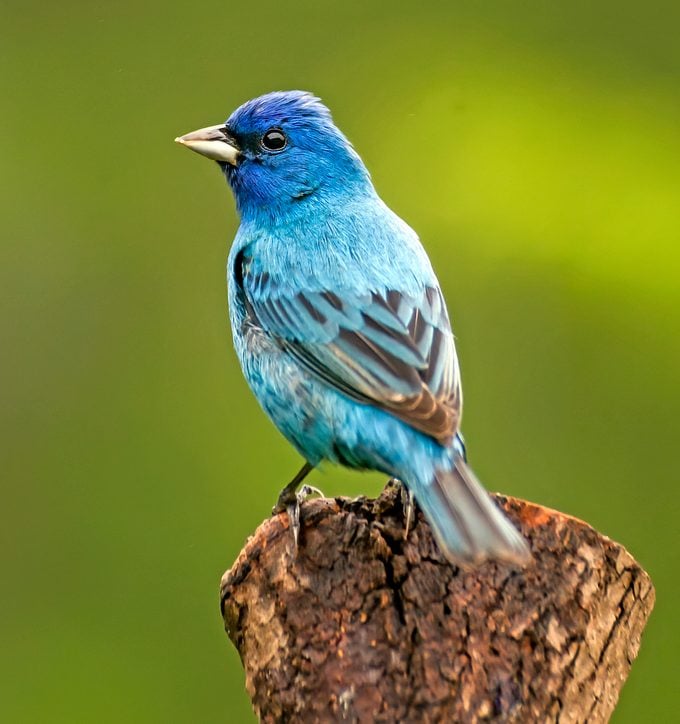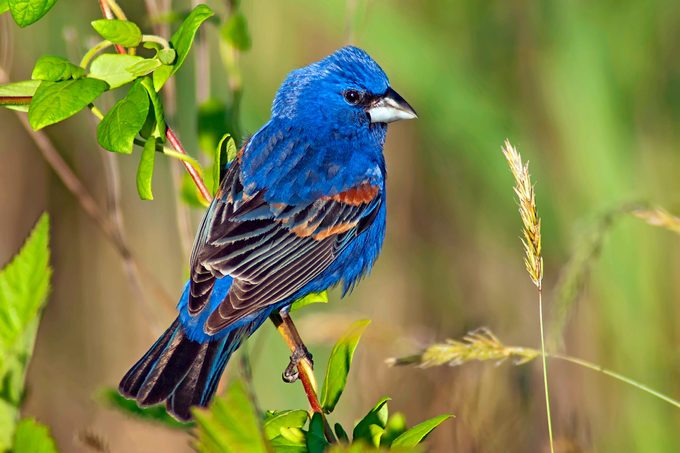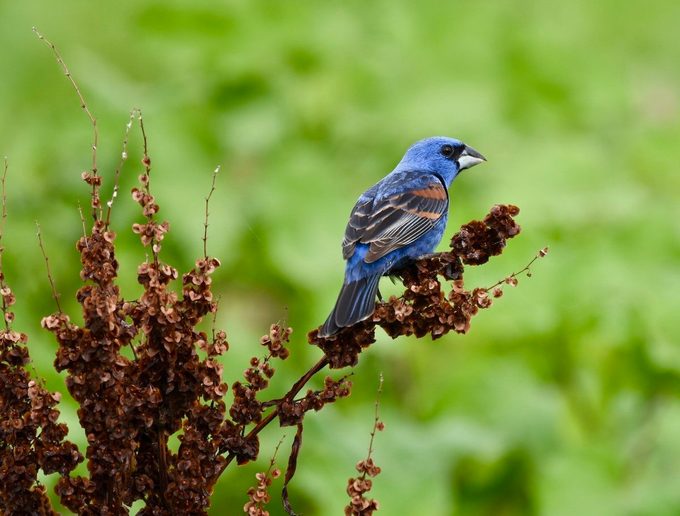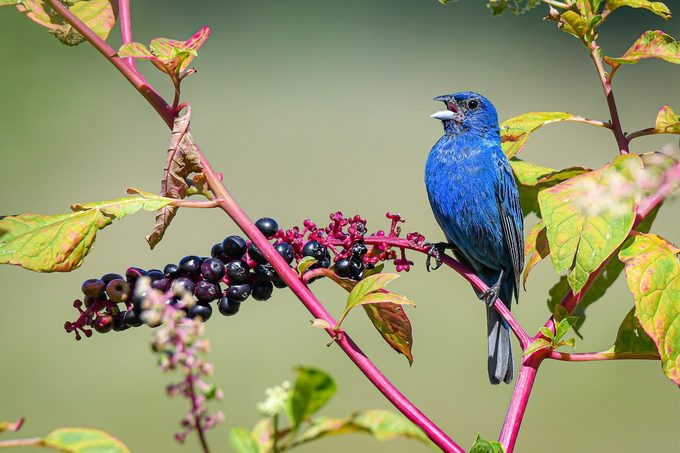Spotted a blue bird that you can’t identify? Here’s how to ace a common birding test: blue grosbeak vs indigo bunting.Blue Grosbeak vs Indigo Bunting: What’s the Difference?

When you peek through your binoculars and see only a fluttering flash of blue, it can be difficult to interpret that glimpse. Which flash of blue have you seen? If you managed to catch a few black accents on the wings, you can rule out eastern bluebirds or mountain bluebirds—but in distinguishing between a male blue grosbeak vs an indigo bunting, that might not be much help. Here’s how to I.D. these birds in a snap, so you’re never left wondering which blue colored bird visited your yard.
Marvel at these gorgeous pictures of indigo buntings.
How to Identify a Blue Grosbeak

Blue grosbeaks have a large head, a stout body, dark blue feathers, and two rust-colored wing bars. Their bill, like the bill of the rose-breasted grosbeak and other birds in the grosbeak family, is heavy and thick. Females are brown with contrasting wing bars.
If you’re hearing a rich, musical warble, you’re hearing a blue grosbeak—they also give a loud chink call when upset.

You’re most likely to spot one in the southern half of the U.S. during the summer, but their breeding range has been expanding north. If you’re located in the western half of Texas, you’ve probably spotted a blue grosbeak.
Learn how to tell the difference between a bluebird vs a blue jay.
How to Identify an Indigo Bunting

In contrast, indigo buntings are sparrow sized birds with bright blue feathers all over, some black on their wings and tail, and darker blue coloring on their head. They lack the blue grosbeak’s rusty wing bars. Their bill is small and conical.
Female indigo buntings are plain light brown with faint wing bars and thin streaks on the chest. When identifying females, focus on bill size and wing pattern.
These birds sing in quick, sweet phrases.
Their range falls in the eastern U.S. and parts of the Southwest during spring and summer. If you’re birding in any of the upper Midwestern states or around the Great Lakes, your mystery blue bird is probably an indigo bunting.







